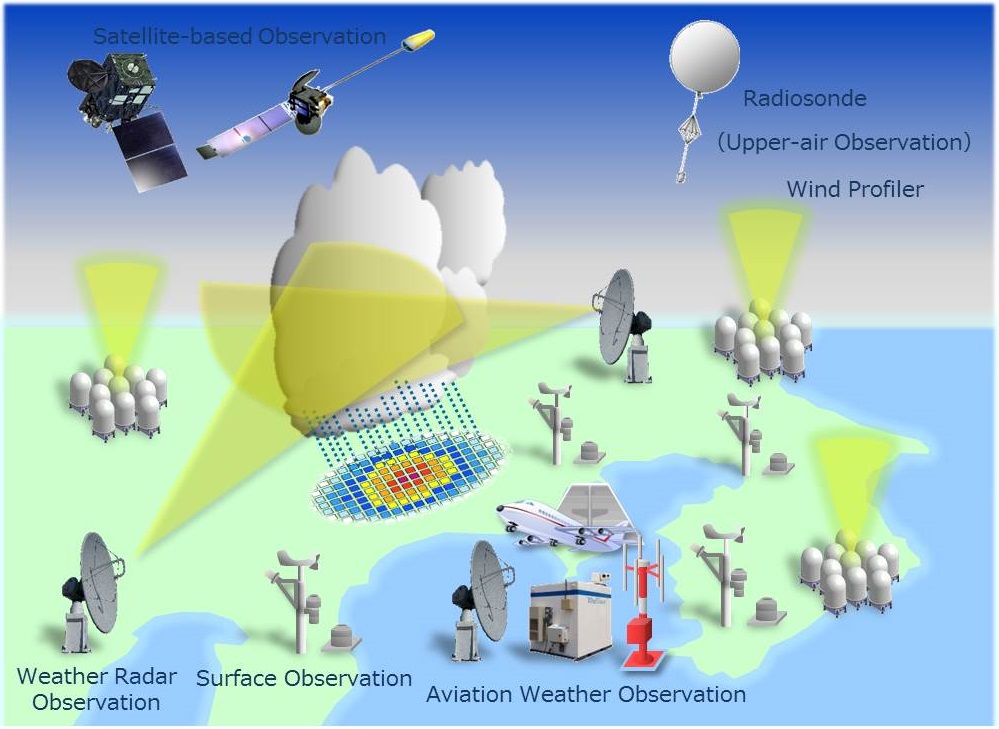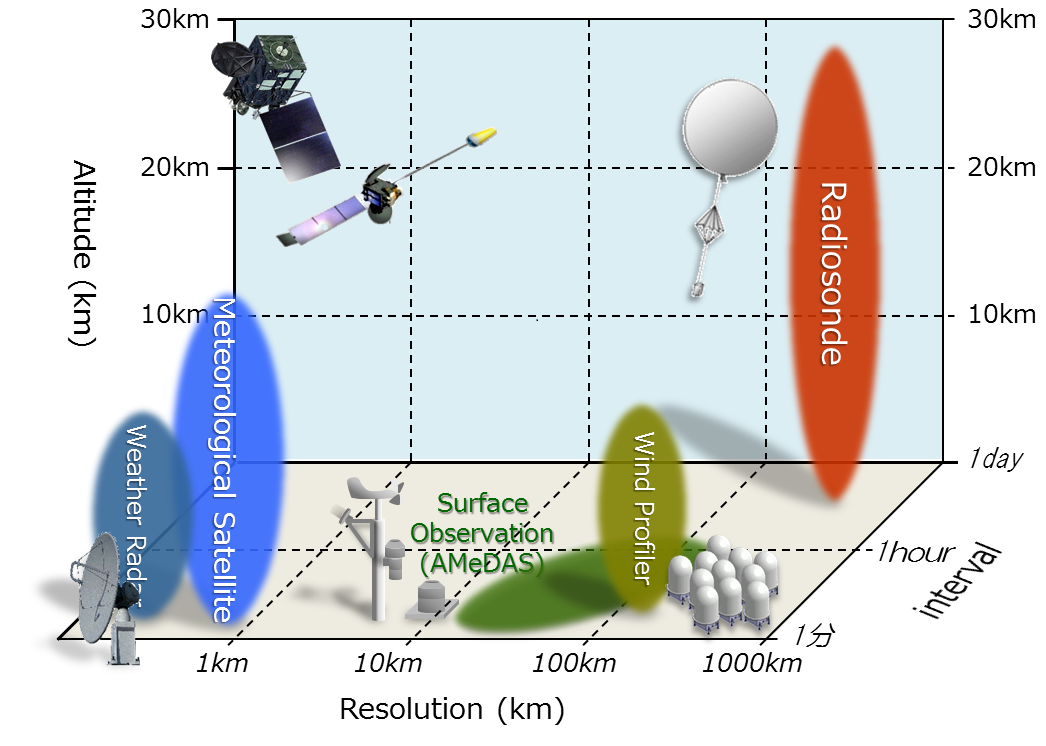Weather Observation
Overview
The Japan Meteorological Agency (JMA) uses a variety of meteorological instruments to observe weather conditions. Surface observation is carried out at about 1,300 stations using a collection of automatic equipment known as the Automated Meteorological Data Acquisition System (AMeDAS). AMeDAS stations automatically record data on variables such as precipitation, temperature, wind direction/speed, sunshine duration (i.e., the length of time that the ground surface receives direct solar radiation) and snow depth. In addition, current weather conditions such as visibility and cloud are visually observed by staff at Regional Headquarters in Tokyo and Osaka.
Weather radars observe precipitation intensity and distribution by analyzing radio waves reflected by precipitation (rain or snow). Radial wind component distribution in areas of precipitation can also be observed by measuring the Doppler effect in radio waves reflected by the horizontal movement of precipitation particles. Wind profile data are particularly useful for monitoring of cumulonimbus clouds causing tornadoes or gusting winds.
JMA also conducts upper-air observation using two different networks. Radiosondes (balloons with an instrument platform composed of a thermometer and a hygrometer) are used for direct observation, while ground-based wind profilers radiate electric waves into the air for observation of the vertical distribution of upper-air winds above the station. This is based on analysis of the Doppler effect from atmospheric scattering of waves, and is very useful in identifying lower-atmosphere moist air flows that may bring heavy rain.
From the sky, the Himawari series of geostationary meteorological satellites observe clouds and meteorologically significant gas elements such as water vapor.
In addition to this basic weather monitoring, JMA also conducts aviation weather observation to support safe aircraft operation. Weather Doppler radars monitor precipitation and wind at nine domestic airports, and laser-based Doppler lidars are operated at three major airports. The combination of radar and lidar data enables the detection of sudden changes in wind conditions around runways even when there is no precipitation. In addition to these instruments, monitoring systems are operated at 30 airports nationwide to detect lightning. Data collected from such observations contribute to the safety, efficiency and regularity of domestic and international aviation.

Weather observations
Spatial and Temporal Resolution of Observations
Atmospheric weather phenomena cover a variety of scales, and include high-/low-pressure systems (thousands of kilometers), tropical disturbances and frontal zones (hundreds of kilometers), and cumulonimbus groups and linear precipitation bands (up to tens of kilometers).
A combination of instruments with different spatial resolutions is used for accurate three-dimensional observation of these phenomena, including the surface weather observing system, the AMeDAS system and radiosondes for recording of conditions at individual observation points. Meanwhile, weather radars, wind profilers and meteorological satellites cover wide areas for momentary observation using remote-sensing technologies. As meteorological phenomena have their own characteristic time scales, observation frequencies are managed appropriately in each system toward the retrieval of appropriate information for atmospheric monitoring.

Spatial and temporal resolution of observations
Utilization of Meteorological Data
After a process of stringent quality monitoring/control, observation data are provided to users. Nowadays processing is often performed automatically using computers, but visual checking with the human eye remains important. In this role, JMA staff are active around the clock.
Quality-controlled data are essential not only in the monitoring of current weather conditions but also in a variety of operational and research fields, including daily weather forecasts, short-range forecasts for severe weather monitoring, typhoon analysis and climate change monitoring.

Processing and utilization of observation data